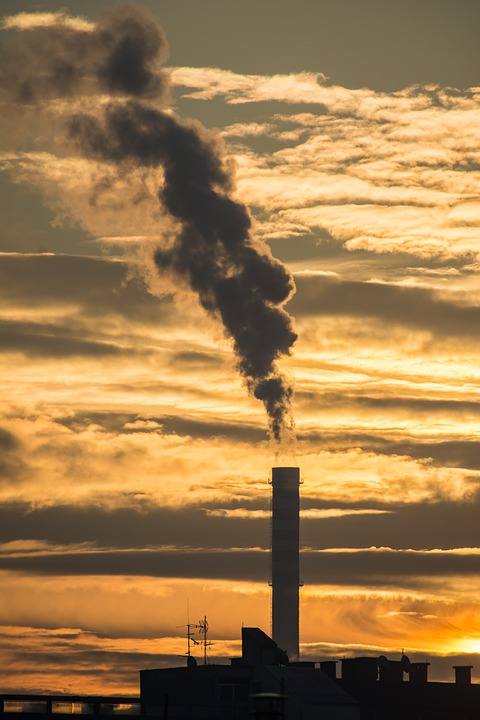
Around this time of year, back in 1859, the first oil well was drilled by Edwin Drake in north-west Pennsylvania. After a slow start – drilling initially progressed at a rate of just three feet per day – Drake struck it lucky and hit oil at a depth of 69.5 feet. The oil was brought to
the surface with a primitive hand pump and collected in a bathtub while the associated natural gas escaped into the atmosphere.
A lot has changed in the subsequent 150 years. The oil and gas industry has developed into one of the country’s most technologically advanced, able to drill deeper and access reserves that Drake never would have foreseen. Despite these advances, however, some things have remained the same. To this day, oil drillers still often allow natural gas to escape into the atmosphere, rather than capturing it. Releases also occur during gas production due to accidental leaks, intentional venting, and incomplete flaring at well sites, storage facilities, and transport systems. The Obama Administration had tried to change that, adopting various regulations to reduce gas leaks, venting, and flaring. These regulations are unlikely to survive under President Trump, however. That’s bad news for anyone concerned about climate change. Or the environment and public health more generally.
Natural gas is comprised primarily of methane, a potent greenhouse gas, with a global warming potential of 84 over a 20 year time horizon. That means, in the first 20 years after it is released, methane traps 84 times more heat in the earth’s atmosphere than carbon dioxide (on a per ton basis). Methane also contributes to the formation of ground-level ozone which is itself a heat-trapping greenhouse gas and, when inhaled, can trigger a variety of health problems. Ozone can, for example, cause throat irritation and coughing, worsen bronchitis and asthma, and reduce lung function.
Recognizing the environmental and public health risks posed by methane, in January 2015, the Obama Administration unveiled a plan for reducing emissions from the oil and gas sector by 40 to 45 percent below 2012 levels by 2025. To achieve that goal, the plan called for regulatory action by two key agencies:
- The Environmental Protection Agency (EPA): The plan directed EPA to adopt rules limiting methane emissions from new and existing oil and gas operations under section 111 of the Clean Air Act (CAA) (42 U.S.C. § 7411). Section 111 provides for EPA regulation of stationary sources that cause or contribute significantly to “air pollution which may reasonably be anticipated to endanger public health or welfare” (dangerous air pollutant). Under section 111(b) of the CAA, EPA must establish technology-based standards, known as new source performance standards (NSPS), for new and modified stationary sources of dangerous air pollutants. Once NSPS are established with respect to a particular type of stationary source, EPA must adopt regulations to address emissions from existing sources of the same type (subject to limited exceptions).
- The Department of the Interior’s Bureau of Land Management (BLM): The Obama Administration directed BLM, which oversees oil and gas development on public lands, to “update [its] decades-old standards [controlling] wasteful venting, flaring, and leaks of natural gas.” The Mineral Leasing Act (30 U.S.C. 181 et seq.) requires BLM to ensure that persons leasing public land “use all reasonable precautions to prevent waste of oil or gas developed in the land.” To fulfill that requirement, BLM adopted regulations with respect to gas venting and flaring back in the 1970s, but had not updated them since.
In accordance with the plan, in June 2016, EPA finalized NSPS for new and modified facilities in the oil and gas sector. The standards require all new oil wells developed using hydraulic fracturing to be equipped with green or reduced emission completions which capture associated gas and route it to a collection system, re-inject it into the well, or use it onsite with no direct release to the atmosphere. Only if this is infeasible can operators flare the gas and in no case can gas be vented. Operators are also required to minimize leakage and, to that end, must conduct leak surveys at least semi-annually and repair leaks detected through those surveys within 15 days.
At the time it finalized the NSPS, EPA also issued an information request to oil and gas companies, to obtain data needed to develop regulations to address methane emissions from existing facilities used in oil and gas operations. As previously reported on this blog, that request has been withdrawn by the Trump Administration, suggesting that it does not intend to continue work to regulate emissions from existing facilities and casting doubt on the future of the NSPS for new facilities.
The future of BLM’s new oil and gas waste rule, which was finalized last November, is also in doubt. The rule prevents the venting of gas, except in narrowly defined circumstances, and places strict limits on gas flaring at wells on public lands. Beginning in 2018, 85 percent of the associated gas produced from oil wells will have to be captured, rising to 98% by 2026. That’s if the rule is still in force then. On February 3, the House of Representatives passed a resolution to repeal the rule. If the resolution is approved by the Senate, it will then go to President Trump, who has signaled his intention to sign it. At this moment, it remains unclear whether the Senate will approve the resolution.
Soon, then, some or all of the methane emission controls adopted by the Obama Administration could disappear. The oil and gas industry says that’s no big deal as operators were voluntarily reducing emissions before adoption of the controls and will continue doing so after they are gone. Even with voluntary action, however, the oil and gas industry still emitted nearly 10 million metric tons of methane in 2014. That’s an 8 percent increase over 2005 levels. If that trend continues, the consequences for public health, the environment, and global efforts to address climate change could be devastating.
Romany Webb is a Research Scholar at Columbia Law School, Adjunct Associate Professor of Climate at Columbia Climate School, and Deputy Director of the Sabin Center for Climate Change Law.



